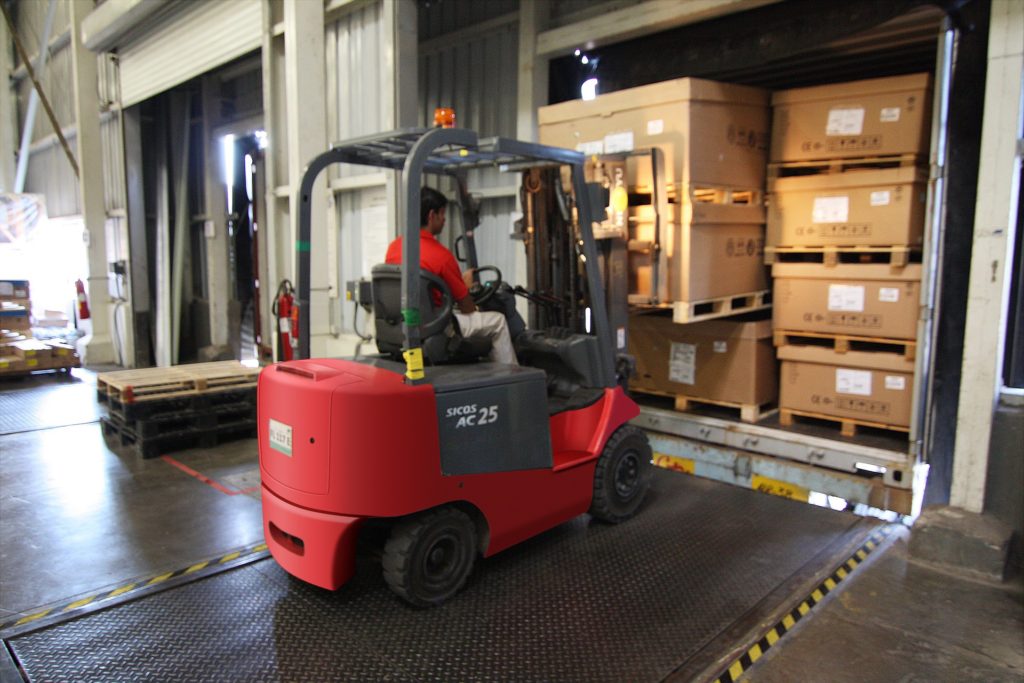 The use of forklifts and similar powered industrial trucks is quite common on a lot of job sites. These vehicles make it easier and faster to move building materials and other heavy objects, saving dozens or even hundreds of man-hours when compared to the use of a hand-truck or other method of transport.
The use of forklifts and similar powered industrial trucks is quite common on a lot of job sites. These vehicles make it easier and faster to move building materials and other heavy objects, saving dozens or even hundreds of man-hours when compared to the use of a hand-truck or other method of transport.
However, such vehicles present a very real danger both to the driver and to those around the forklift. Proper training and following best practices not only prevents serious accidents that can be quite costly, but also saves lives.
What Are Powered Industrial Trucks?
The term “powered industrial trucks” refers to vehicles that are more casually referred to as “forklifts” or “lift trucks.” These vehicles are usually driven by a person sitting in them, though some can be operated by a standing driver or by someone walking and using controls to operate the lift. They are used in a wide range of industries, especially in warehouses, shipping yards, and at construction sites. The speed and power they provide lets workers transport large pallets of materials or heavy objects quickly and efficiently.
Are Forklifts Really That Dangerous?
About 100 people die every year in the U.S. due to accidents involving forklifts, and another 20,000 are seriously injured. Considering that these vehicles are used every day, that is a pretty high number of injuries so serious they needed to be reported.
The fact that these powered industrial trucks are used so frequently can actually increase the danger they pose. Familiarity can make workers less cautious around them than they should be. Forklifts can seem small and “lightweight” compared to trucks on the road, but in reality the damage they inflict can be terrible.
Although accidents can happen in a number of different ways, the four most common forklift accidents that result in a fatality are:
- Forklift Overturns: Nearly 25% of fatal forklift accidents are due to a forklift overturning. This often happens on a loading dock or similar raised area where the driver can inadvertently drive off the edge and overturn the vehicle. Proper training and awareness of surroundings can help prevent these accidents and save lives.
- Worker on Foot Struck by Forklift: About one in five fatal forklift accidents involves a pedestrian being struck by the vehicle. This can happen when a driver does not pay attention, or people working near the forklift are not aware of their surroundings. The small size of a forklift can make it seem less dangerous than other vehicles, but it can strike a person with more than enough force to kill or cause serious injuries.
- Victim Crushed by Forklift: About one in six accidents is due to a forklift physically crushing a person. This can happen because of a forklift falling from a raised location, or a forklift backing a person into a wall or other piece of machinery.
- Fall from Forklift: Fewer than 10% of fatal accidents involve someone falling from a forklift. But it is still a danger that forklift operators need to be aware of. Falls in general kill the most workers in construction and similar jobs every year.
Standards and Regulations Involving Forklifts
The Occupational Safety and Health Administration (OSHA) has set regulations on how forklifts can be used to help reduce the chance of accidents. Perhaps the single most important regulation is that no one under the age of 18 is allowed to operate a forklift.
Anyone over the age of 18 must have certification to use a forklift. Knowing how to drive a car is not enough to safely operate a powered industrial truck. There are specific training requirements that must be met to be certified, and periodically reviewed to renew certification.
Daily examinations of forklifts are also required to ensure that maintenance is performed as needed and to reduce the risk of an accident due to malfunction or defect.
Safe Practices on the Job Site
Businesses are also responsible for establishing safe practices beyond training to ensure all workers remain safe around forklifts. This can include things like clearing areas of workers before a forklift is used, and requiring spotters to ensure people stay clear of a dangerous area. Employers need to train workers in these practices, and ensure they are upheld at all times to keep people safe. If they don’t, they can be held responsible for all the costs of a resulting injury.
If you were seriously injured by a forklift at work, you may very likely be entitled to compensation under the law. Call our Wingate, Russotti, Shapiro, Moses & Halperin, LLP New York forklift accident attorneys at (212) 986-7353 in a free consultation to find out what we can do for you.